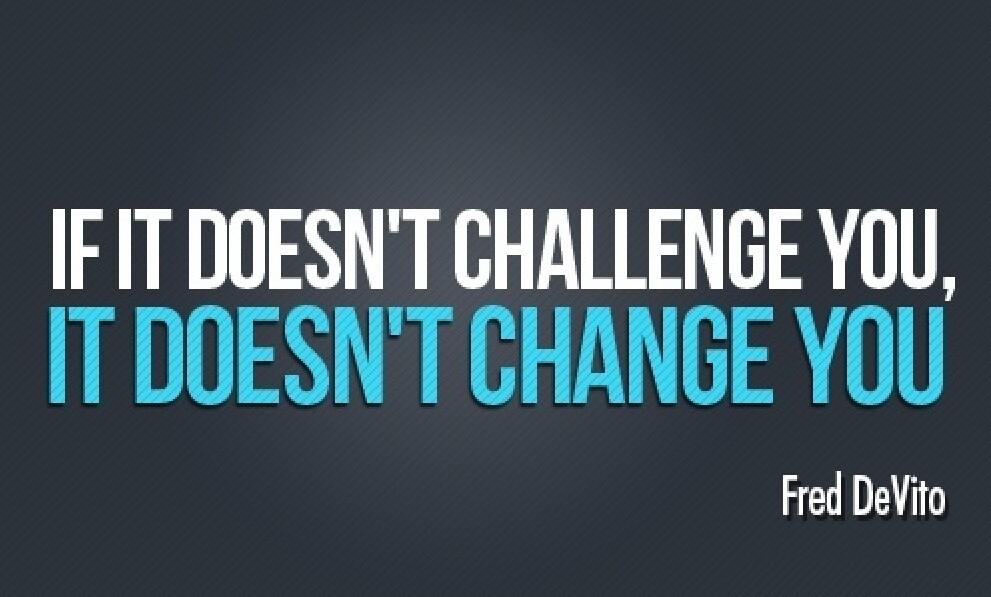 “Life can only be understood backwards; but it must be lived forwards.” – Soren Kierkegaard
“Life can only be understood backwards; but it must be lived forwards.” – Soren KierkegaardThe last quarter of 2016 is almost history and as we stand poised to welcome 2017 in less than 2 weeks, we hope for a future that is successful, rewarding and where your dreams will be realized. Having seen the start of more than a few “new business years” during my career, I’ve learned that you can do one of two things in preparation for the coming year. You can yet again try to create a brand new marketing strategy for the coming year or you can pause, look back and do some serious reflecting, resolving to change, or improve some aspect about how you will initiate your future marketing campaigns. For some people, looking back over the past year may be something better left in the rearview mirror; on the other hand, burying your head in the sand can be seen as the primary ingredient in a recipe for another disappointing year…and you know how much the CEO/President/Owner/Founder loves that kind of thinking. So, before one celebrates the dawn of a new year…take time to ask yourself what are you going to do to change? What does success in 2017 look like to you and your executive management team?
Speaking for myself and our firm, the end of each year is met with a healthy dose of optimism for the coming year. We see 2017 through a lens of hopefulness, that things will continue to get better. Is that just us or will you and your organization also view the coming year with a level of anticipation that you haven’t had for a few years? Hey, it’s been tough for most everyone out there but let’s remember that at least a few organizations — perhaps some of your own competitors — have fared better than most despite these trying times. So what have they done to plot a course for a more optimistic and profitable path for success in 2017?
Depending on marketplace factors coupled with how well you were able to strategically position and market your company, the past year was either seen as a success or another year of same-old, or even a disappointment. The question that begs to be asked here is, how much of last year’s growth or lack thereof was because of something you had no control over, such as good or bad luck, and how much was because of something you specifically chose to do or not do? I’ve found through personal experience this is the time to be totally honest with yourself. As Sigmund Freud said, “Being entirely honest with oneself is a good exercise.”
Hey, I’m all for a bit of luck but you probably don’t want to continue betting future success on lucky things happening in the coming year. With this in mind, here are a few questions to ask yourself as thought starters as you begin the process of looking in the rearview mirror at this past year and through your windshield to the next:
As marketers, one thing we know for sure is that change will not stop in 2017. The marketplace will continue to shift on us, and so will the economy. But by reflecting back on 2016, taking control of your marketing activities rather than being tossed around by the waves in the market, along with thinking optimistically about what 2017 can hold, this New Year might actually be a year worth celebrating. It will be for us and hopefully will be for you as well.
####
Rolf Gutknecht is vice president, director of account services for LA ads. To discuss your thoughts with Rolf on this blog or any marketing matters, email via this link, or visit www.LAadsMarketing.com. You can also connect with Rolf on LinkedIn.
 Fulfillment isn’t always what it’s cracked up to be, especially in business. Consider a conversation I had today with one of our media reps that revealed why so many B2B ads aren’t just bland but simply bad. This was in response to why an ad appeared in their publication quite differently from what the advertiser expected. (We didn’t do this ad, so we’re off the hook!) When we asked the rep why the ad didn’t fit the space properly, and why the publication didn’t contact the advertiser to discuss the problem, the answer was they’re so used to getting poorly-designed ads, they’ve just come to accept what they’re sent without question.
Fulfillment isn’t always what it’s cracked up to be, especially in business. Consider a conversation I had today with one of our media reps that revealed why so many B2B ads aren’t just bland but simply bad. This was in response to why an ad appeared in their publication quite differently from what the advertiser expected. (We didn’t do this ad, so we’re off the hook!) When we asked the rep why the ad didn’t fit the space properly, and why the publication didn’t contact the advertiser to discuss the problem, the answer was they’re so used to getting poorly-designed ads, they’ve just come to accept what they’re sent without question.
How shocking this answer was to us! And yet, it so perfectly identifies the state of things across many of the industries in which we work.
The real problem is that in the last several decades, the role of marketing has been relegated to fulfilling. In other words, it seems the task these days is to “get the ad into the pub,” and not worry about whether the ad is great and shifts the attention of the audience. Advertisements, websites, collateral and all other marketing communications are less effective today it seems because they’re just space-fillers. The media plan says they have to be there. So the result is lots of media space or air time taken up with ad messages that aren’t merely forgettable but are also not produced or placed that well.
So it’s time for anyone who is responsible for advertising and marketing to look in the mirror and ask, “Am I a fulfiller or a marketer? Is marketing a task to be checked off on my list of the day’s activities or do I delight in the prospect of arriving at a plan so smart and unexpected, it makes me giggle?” Fulfillment is great in the abstract, but a killer in business.
I’ve often said that marketing is a self-fulfilling prophesy: if you believe it works, you’ll invest yourself and your resources into it fully and – Voilà!- it works; or if you doubt its effectiveness, you’ll put in the minimal efforts (in other words, simply fulfill the order) without great enthusiasm and you’ll also be proven right.
Every piece of communication from your desktop is an opportunity to invigorate sales and renew a conversation with your customer…if you believe it will.
It means, in some cases, looking at the internal team who are engaged in your marketing. Are they people who majored in advertising and marketing in school, and are they still “students” of it today? Or did they move across from the HR or accounting department because nobody else wanted the job? Are they fully invested employing great marketing to grow your operation, or are they also juggling bookkeeping, sales, IT and family services all at the same time? Are you taking full advantage of outside resources who aren’t just design shops and web programmers but genuine marketing specialists, who will challenge and surprise you and are willing to own up to the results?
In other words, at the bottom line, is marketing a joy…or is it a job?
Think carefully about how you answer this. Because your company’s success hangs in the balance.
####
Rolf Gutknecht is vice president, director of account services for LA ads. To discuss your thoughts with Rolf on this blog or any marketing matters, email via this link, or visit www.LAadsMarketing.com. You can also connect with Rolf on LinkedIn.
 Oh, the world of numbers. To those involved in Marketing, it goes with the territory. We look at the marketplace and how many prospective customers there might be. We slice and dice demographic information and analyze demographic trends. We do quantitative market research. We fixate on how many likes, follows, shares, retweets, etc. have occurred. And we’re not finished yet as new and more “effective” metrics are constantly being developed. While tracking marketing numbers isn’t like keeping up with the stats of, say, baseball, for many marketers, numbers are almost everything. And for some, they are everything.
Oh, the world of numbers. To those involved in Marketing, it goes with the territory. We look at the marketplace and how many prospective customers there might be. We slice and dice demographic information and analyze demographic trends. We do quantitative market research. We fixate on how many likes, follows, shares, retweets, etc. have occurred. And we’re not finished yet as new and more “effective” metrics are constantly being developed. While tracking marketing numbers isn’t like keeping up with the stats of, say, baseball, for many marketers, numbers are almost everything. And for some, they are everything.
Now, I’m pretty good at math. So, numbers don’t give me cold sweats, but truth be told, when it comes to marketing, I’m not a Big Data guy at all. I’m not one to get all caught up in the numbers game. The reason being that while I’m an “account guy,” I understand what really good creative, execution and integration will do toward driving sales compared to run-of-the-mill stuff. On more than one occasion, our agency has spoken with prospective clients who tell us how their marketing metrics are sucking wind. Our first response is: “Let’s look at the creative you’re running and what it’s saying.” When it’s shown to us, there’s little doubt what is creating the angst.
For my liking, there are far too many marketers that rely heavily on numbers to drive the marketing decisions. Everything has to have a value and must be measured. A former boss of mine who came from a LARGE national company once said to me after meeting with a “numbers marketer” that marketing is not a paint-by-numbers game where if you follow the color assignments and stay within the lines, the end result would be a beautiful painting. Viola! Instant success…without expending much thought, energy or creativity. And, that’s what I fear is what is happening to marketing.
From where I sit, you can see when this takes place. Look at a TV commercial, or radio spot, or tradeshow booth, or go online. There seems to be more and more marketers who are buying into templates, guides and models. It’s as if the marketplace is just a large paint canvas fractured into tiny parts, which, if you paint each activity with the right color and stay within the lines, you’ll have a winning marketing program. Not so! What I believe happens more times than not is that you don’t end up with a masterpiece but rather a painting of dogs sitting around the table playing poker…you know the one.
For a marketing program to be as clever, contemporary, and inviting enough to gain your audience’s attention, it requires meaningful thought, understanding, listening and… creativity. Uniqueness. Unfortunately, creativity and emotion are often scrubbed clean (and out of the picture) much to the happiness of many marketers who rely merely on data.
Yet some brands manage to break-away from the status quo and attain results. These brands — and those people who oversee them — combine experience and talent with a commitment to being fearless.
And then other brands try to find equal results by copying them. Remember “Got Milk”? Soon after, we saw “Got Plumber” and “Got Rice” and “Got …whatever” In the case of our agency, we developed a marketing program for a client that used a weeping angel statue (like you find in cemeteries) to demonstrate how one would feel using the wrong type of business software. Hardly a few months after, a direct competitor used strikingly similar imagery and messaging. Really?!? I guess imitating was their template to seeing better results rather than trying to come up with something original themselves. They (the competitor) were trying to paint-by-numbers into a template not of their own making.
So what are the takeaways from all of this:
• Having metrics drive all your marketing decisions, void of smart, clever, on-point messaging that resonates with your audience, is a road with a dead-end. Which is probably not what you really want.
• Templates and “how to” guides do not lend themselves to creativity.
• If you are responsible for marketing, it is your job to think differently. Painting by the numbers and staying within the lines won’t yield profits.
• BONUS: “The truth isn’t the truth until people believe you, and they can’t believe you if they don’t know what you’re saying, and they can’t know what you’re saying if they don’t listen to you, and they won’t listen to you if you’re not interesting, and you won’t be interesting until you say and do things imaginatively, originally, freshly.” – Bill Bernbach
In the end, while numbers and data help marketers define the market and opportunities that present themselves, as well as quantifying the buyer’s journey, remember that lasting relationships and brand loyalty are the result of original thinking.
####
Rolf Gutknecht is vice president, director of account services for LA ads. To discuss your thoughts with Rolf on this blog or any marketing matters, email via this link, or visit www.LAadsMarketing.com. You can also connect with Rolf on LinkedIn.
 Over the years, there’s one TV show that I make a point of watching and it’s “The Voice.” It has nothing to do with me fashioning myself as a singer and secretly wishing I was up there performing. In fact, I’m not a good singer at all. When our family goes to our annual vacation spot and the karaoke machine comes out, and I do my couple of songs, people just wince at how bad I am. Not to put too fine a point on it but when I was a kid, I was asked to leave (read: kicked out) of the kid’s church choir. Yeah, I’m that bad.
Over the years, there’s one TV show that I make a point of watching and it’s “The Voice.” It has nothing to do with me fashioning myself as a singer and secretly wishing I was up there performing. In fact, I’m not a good singer at all. When our family goes to our annual vacation spot and the karaoke machine comes out, and I do my couple of songs, people just wince at how bad I am. Not to put too fine a point on it but when I was a kid, I was asked to leave (read: kicked out) of the kid’s church choir. Yeah, I’m that bad.
Anyway, as I was watching the show last week, I started wondering why I had come to like the show as I have. Was it the way that show was setup – from blind audition to knock-out rounds, or was it that the judges could steal a singer that was dropped by another coach, or was it the celebrity coaches, or the singers themselves, or something else. And in doing so, out of the blue it occurred to me that there’s a few things that as marketers we could all learn and begin to apply to our individual marketing activities.
So what lessons are to be learned in order to connect with your audience:
While I can’t tell you who will win this season’s competition, I can tell you that the singers who have strategically given thought to the songs that they should sing and how they should perform those songs, will likely be the last ones standing. They understand that in order for people to buy into who they are and what they can become, they need to connect with the coaches and audiences in ways more powerful and moving than those they’re competing against. WOWing them is a must.
Because at the end of the day, what you tell prospective customers has to fascinate and captivate them – in a way that keeps them engaged and wanting to know more about you, which will lead to increased sales and revenue. As advertising legend, Bill Bernbach, said: “The truth isn’t the truth until people believe you, and they can’t believe you if they don’t know what you’re saying, and they can’t know what you’re saying if they don’t listen to you, and they won’t listen to you if you’re not interesting, and you won’t be interesting until you say and do things imaginatively, originally, freshly.” (NOTE: Now read it again but this time insert the name of your company every time you come to the words “you.”)
Those who always wish to sing will find a song.
####
Rolf Gutknecht is vice president, director of account services for LA ads. To discuss your thoughts with Rolf on this blog or any marketing matters, email via this link, or visit www.LAadsMarketing.com. You can also connect with Rolf on LinkedIn.
 It’s one of the more iconic moments in film over the last three decades. Robert De Niro plays taxi driver Travis Bickle, who in one chilling scene looks at himself in the mirror, a pistol up his sleeve, and says to an imaginary adversary, “Are you talkin’ to me? You talkin’ to me?”
It’s one of the more iconic moments in film over the last three decades. Robert De Niro plays taxi driver Travis Bickle, who in one chilling scene looks at himself in the mirror, a pistol up his sleeve, and says to an imaginary adversary, “Are you talkin’ to me? You talkin’ to me?”
What’s this have to do with marketing? Well, as consumers we’re actually all asking this question whether we think about it or not. Because the only marketing that breaks through the clutter is that in which the message undeniably speaks directly to the reader/viewer/listener/user from his or her own perspective. The reader/viewer/listener/user knows for certain, “You’re talkin’ to me!”
Here’s what I mean:
Recently, we saw an ad for mortgage company with a photo of a man dressed in a business suit leaning backwards like an acrobat. The headline said “Can your mortgage broker do this?” On the surface, you might say that’s a humorous, attention-getting ad. But really, it’s just showing a visual pun without telling any compelling story about what flexibility means to the reader. It’s just saying so and nothing more. Compare that to another mortgage company’s ad that showed one of those toy labyrinths where the steel ball might drop through one of a dozen holes in the maze at any turn, and the headline says “We know just how you feel about refinancing your house.” The first ad speaks from the company’s point of view, the second speaks from the reader’s. There’s no question that in the second ad, the reader knows “You’re talkin’ to me!”
If you want your audience to connect with your message, it has to be based on their real experiences and what’s in it for them, instead of all the features you have to offer.
It’s ridiculous that I have to say this but the memo has not reached the desk of many marketers, so here goes: “It’s not about what your company wants to say but rather about what the customer wants to hear.” (I feel better having said it.) Look, if you want to market based on your personal preferences without regard for what works best with your prospects, that’s your prerogative. But I’d suggest that your company’s marketing not be so self-absorbed. Remember, you don’t buy from you, others buy from you and they don’t care about your business and your troubles nearly as much as you do. Most people are tuned into Radio Station W.I.I.F.M. —“What’s In It For Me!” If your marketing message is all about you, then your customers won’t notice what you’re saying. Please begin to “tune” into your customers, find out what they really want and focus your message on them.
We recently conducted a webinar about exhibiting at a major trade show that one of our client’s exhibits at. It’s tragic how many booths fail to attract traffic simply because they don’t design their exhibits from the audience’s perspective. They’re loaded with too much feature-based content and lack a simple benefits-oriented message. No one passing by would stop and say “You’re talking to me!”
A shift in perspective from speaking about yourself to speaking from the audience’s point of view can be remarkably effective. Witness a beautiful commercial for a British online content company featuring a blind man whose original cardboard sign talks about himself,
“I’m blind. Please help.” But when a caring passer-by changes the words to be more audience-focused, something powerful happens. [youtube https://www.youtube.com/watch?v=Bq3Dgy3Wx_0&w=560&h=315] As marketers, the symbolism of what you or your firm can offer the organization, is front and center.
No matter what you sell, manufacture or service, it’s critical that you change your marketing message’s perspective from talking at your audience to talking to them, causing them subconsciously to acknowledge, yes, “You’re talkin’ to me!”
####
Rolf Gutknecht is vice president, director of account services for LA ads. To discuss your thoughts with Rolf on this blog or any marketing matters, email via this link, or visit www.LAadsMarketing.com. You can also connect with Rolf on LinkedIn.
 Most every time I listen to a radio spot in my car, see a TV spot on cable or fan through the pages of a magazine (trade or consumer), I find myself wincing. Ad after ad tells the same sad story: money spent leading to no results. In fact, I’d venture to say that better than 85% – 90% of the ads lay the same leaden egg. Oh, the humanity!
Most every time I listen to a radio spot in my car, see a TV spot on cable or fan through the pages of a magazine (trade or consumer), I find myself wincing. Ad after ad tells the same sad story: money spent leading to no results. In fact, I’d venture to say that better than 85% – 90% of the ads lay the same leaden egg. Oh, the humanity!
If you’re questioning whether your advertising is doing what you paid it to do, odds are it’s not. And although there are master classes you might take in advertising creativity, marketing strategy and media planning, it’s very likely the problem falls within four main areas. Checking off each point, you can estimate your ad’s effectiveness even before you place it. I mean it.
Here then are the four fundamental concepts that can make a meaningful difference in how successful your next advertising effort is.
1) Have a something compelling to say. And by that, I mean not just compelling to you and your staff, but to a completely disinterested audience. If you’ve followed my posts for any length of time, you know that I frequently observe that people don’t like advertising, and completely ignore the boring or hard-to-figure-out kind. So whatever you have to say must go the distance to alter their indifference. Don’t just tell your audience you’re “a leader in the industry” or that you’ve been around for three generations. They’ve heard that so many times before from you and your competitors that it means nothing to them. Instead tell them something they don’t know, something that might even surprise them. You can tell when someone’s ad is truly compelling when you think, “Gee, I didn’t know that!” We sometimes call that a “sticky” message, one that has staying power after the reader has turned the page or flipped the channel.
2) Sell, don’t just tell. One of the most egregious mistakes advertisers make is simply laying out all the features of their product or service and expect the audience to figure out why that’s important to them. Often that’s done in the form of five or seven bullet points, such as:
or in Business-to-Business ads (snatched from the pages of a recent trade pub):
Yikes! There’s no emotion in that. There’s no selling. There’s no story or connection. Instead of praying that maybe one or two bullets might hit home with some member of the audience – or worse, trying to be all things to all people – why not focus on one point at a time and spell out why that point really matters. People don’t buy bullets. They don’t buy features. But they do buy benefits and ideas that add value to their lives. Always be thinking, from their point of view, “what’s in it for me?”
3) Be your own brand and not a clone of others. All too often, within any given industry, I see ads in which the logos and contact information are interchangeable, one company’s with another’s. None stand out, all look alike, and thus all the players are perceived as a commodity. Here’s a question for you: If your logo was blocked out of your ad or commercial, would the audience still know it’s yours? Take, for instance, Jack-In-The-Box. Their commercials are radically different from McDonalds’. BMW’s ads are unmistakably theirs and not Mercedes’. It’s a matter of message but also a matter of style, personality and consistency. The more striking and distinctive your ads are, the stronger competitive impact they’ll make, while your competitions’ ads could be just anybody’s. Dare to be Different!
4) Tell the same story across all your platforms. With all the buzz about Social Media, it strikes me as odd that most business Facebook pages and outbound Tweets have little in common with their owners’ main marketing messages. In part that’s because the marketing messages themselves aren’t that well-defined. But it’s also because the marketers don’t appreciate the importance of speaking with the same voice at any touchpoint. Good marketing is a collective enterprise and an erosive processes. For instance, if your main story is about how your company has been around for over 100 years, use your Facebook pages to talk about the early days of your firm, the companies you’ve served, etc. Make sure your phone hold-message tells the same story. Make sure you hold special events or promotions that support the theme. If you don’t keep hammering away at the same selling proposition at every touchpoint, then each effort conflicts with every other.
While hardly a full compendium of marketing knowledge, if you make the effort to assure your advertising and marketing is consistent with these four points, you’ll be far out in front of 85% of your competition. And that’s the goal, to create ads your customers will react to and that your competition will hate.
####
Rolf Gutknecht is vice president, director of account services for LA ads. To discuss your thoughts with Rolf on this blog or any marketing matters, email via this link, or visit www.LAadsMarketing.com. You can also connect with Rolf on LinkedIn.
 As a marketing firm that’s always looking to engage in new business relationships with interesting companies, we continue to have more than our share of new business meetings. These companies run the gamut from small to “you’ve heard of this company before” and while they’re sometimes far removed from one another in terms of sales and recognition, a surprising number of times there’s not that much of a difference in their approach to their marketing initiatives which, as my business partner puts it, “borders on marketing malpractice.”
As a marketing firm that’s always looking to engage in new business relationships with interesting companies, we continue to have more than our share of new business meetings. These companies run the gamut from small to “you’ve heard of this company before” and while they’re sometimes far removed from one another in terms of sales and recognition, a surprising number of times there’s not that much of a difference in their approach to their marketing initiatives which, as my business partner puts it, “borders on marketing malpractice.”
How am I defining “marketing malpractice?” Well, while it might take form in a few different ways, it’s primarily about a breach of duty that does harm when another course of action, as performed by a reasonable person, should have been taken. In short, it’s about negligence. While malpractice is commonly associated with the medical, financial and legal world, it could also be readily applied to the marketing world as well.
With that in mind, let’s look at 5 ways that companies and marketing leaders could become guilty of marketing malpractice:
Not having a full grasp of the marketplace
Too many companies assume that there is absolutely no need to substantiate their beliefs about the marketplace, about what their prospects want, about why their customers are buying, about what people think of their brand, about most anything having to do with those whom they want to purchase their products or services. Generally the thinking is that no one can know the marketplace as well as the company and the market will accept whatever you offer. Are you pretty darn confident on how your specific industry is changing and what is needed to get out in front of the competition? Understanding the marketplace as a whole will create the opportunities that bring with it the sales, visibility, prominence, trust, etc., that you might be looking for. And you get there by doing some research…the right way.
A lack of focus
The “We have to be here, there and everywhere” thinking is a sure way to squander the limited budget that you have. And who said that you need to be all over social media platforms like LinkedIn, YouTube, Facebook, Twitter, Google+, and Pinterest? Heck, you’ve got your product literature online, and your Web site has a blog and videos. Not to mention all the offline activities ranging from tradeshow activities to advertising to PR, etc. Why did you believe you need to be in ALL of these media locations in the first place, and, just as importantly, who is making sure that all of these activities work together?
Inconsistency or mixing of marketing messaging
When different aspects of your marketing messages don’t reinforce each other, the inconsistencies alienate prospects and current customers. Inconsistent marketing distorts clear expectations, makes potential customers unsure of the characteristics of your products and creates unhappy customers who don’t get what they expect. These inconsistencies affect businesses by reducing both initial sales to consumers as well as repeat sales from dissatisfied customers. Throwing stuff up against the wall to see what sticks is a clear path to wasting resources and confusing people/organizations that you want as customers.
Being just like the other guy
How many times have you read or seen something from one company that looked just like what one of their competitors has or is currently saying? For an example, go online and look at professional services firms and tell me why one is different from the other. The fact is that there is no relevancy to what you’re saying if you just keep repeating what others have said already. Your company/products/services only has value if you’re different and if you can find a way that you can take who you are, what you make, and what you offer and create a relationship with prospects and current customers that is instantly captivating. Striving for differentiation rather than being a “me-too” allows for the organization to seize on new sales-producing and revenue-generating opportunities. Otherwise, you’re just a lazy copycat…two words that don’t leave the minds of the customers and competitors anytime soon.
Confusing strategy with tactics
Maybe, just maybe, the most common marketing malpractice occurrence is not having one over-arching marketing strategy – and ensuring its implementation through all your tactics. Executing marketing tactics without having a well-developed integrated strategy is a recipe for disaster. It’s easy to start with the “how” but if you haven’t identified the “what,” you may find yourself spending a lot of time executing tactics that don’t take you where you want to go and in so doing, you’ll be wasting time, resources and losing out on sales-producing opportunities. What is needed is one single integrated strategy that looks across all delivery platforms whether online or offline, print, broadcast, or mobile. Your customers don’t have an online self and offline self and neither should you. Think holistically about all your marketing initiatives.
At the end of the day, both the short-term and quite possibly the long-term prospects of the company could be affected as a result of marketing malpractice. Whether done because one doesn’t know better or because of expediency, it happens and the organization will have to live with the results. So, while you won’t be brought into court (unless you did something very egregious), one question that a marketer has to ask oneself and answer honestly, is: “Have I breached my duty as the marketing leader for the organization so much so that it has caused harm to both short and long term sales, visibility, prominence, market share, and trust for the company?” Hopefully, the answer today and in the future will remain a resounding NO.
####
Rolf Gutknecht is vice president, director of account services for LA ads. To discuss your thoughts with Rolf on this blog or any marketing matters, email via this link, or visit www.LAadsMarketing.com. You can also connect with Rolf on LinkedIn.
 Last week, just after sitting down for lunch with a new business prospect, and right after exchanging business cards, the gentleman looked at my business partner’s card and then mine, and said, “Hey, both of your titles say ’Agent of Change’…tell me more about that.” And we did. We told him about having trademarked “Agent of Change,” how every one of our employees has the same title, how it’s the essence of our business approach, and most importantly by far, how it’s our mission and mindset as marketers. For us it was easy to define what those three words meant because we live and breathe it each day. You might say it’s part of our DNA. But for many marketers, those who want to believe that they are an Agent of Change within their organization, it might not be as easily defined. In fact, if I were to ask you right now, how might you define an Agent of Change, you’d probably want a minute to think of a good definition. (At the end of this post, I’ll give you our view on how our firm defines an “Agent of Change”.)
Last week, just after sitting down for lunch with a new business prospect, and right after exchanging business cards, the gentleman looked at my business partner’s card and then mine, and said, “Hey, both of your titles say ’Agent of Change’…tell me more about that.” And we did. We told him about having trademarked “Agent of Change,” how every one of our employees has the same title, how it’s the essence of our business approach, and most importantly by far, how it’s our mission and mindset as marketers. For us it was easy to define what those three words meant because we live and breathe it each day. You might say it’s part of our DNA. But for many marketers, those who want to believe that they are an Agent of Change within their organization, it might not be as easily defined. In fact, if I were to ask you right now, how might you define an Agent of Change, you’d probably want a minute to think of a good definition. (At the end of this post, I’ll give you our view on how our firm defines an “Agent of Change”.)
If you’re looking for a dictionary definition, an Agent of Change is someone who “alters human capability or organizational systems or activities to achieve a higher degree of output or self-actualization.” Beginning with the end in mind, the goal of an Agent of Change is obviously to make changes that stick and is the foundation for future change which achieves results that weren’t previously possible. While this dictionary definition is ok, I think it misses the essence of what it means to be an Agent of Change. It has as much to do with identity and character as it is any definition.
So with that in mind, here are some ways that it feels to be an Agent of Change
Lives in the world of “tomorrow.” Regardless of what is going on today, an Agent of Change has a vision of what could or should be and uses that as the driving force to take action. To a certain extent, an Agent of Change is dissatisfied with what they see around them, in favor of a much better vision of the future. A great place to be!
Fueled by passion, and inspires the same. Change is hard work and it takes a lot of energy. Don’t underestimate this. Without passion, it’s very difficult to gather up enough energy to take on dreaded status quo that seems to otherwise carry the day. “Status quo is Latin for the mess we’re in” said former President Ronald Reagan.
Understands people. You can’t create the change that is needed if you have no real understanding of what people need or seek. It’s not about what you can do or say but rather about what the customer wants to hear. It’s also not about what you think the customer wants. Instead, you need to know what the customer wants and that sometimes requires digging deep to get to the heart of what motivates people. Knowing has saved me from my mistaken “I think” a good number of times.
Has a strong ability to motivate themselves to move forward. There are going to be lots of days where people don’t understand and can’t recognize or grasp what’s being offered up as a solution. The Agent of Change needs to find it within themselves to get up every day and come to work and risk being misunderstood and unappreciated.
However, I think the definition also needs to be based on what an Agent of Change does, in addition to the personal traits required. You see, people are willing to change when the pain of the status quo exceeds the pain of change. Or, when the future looks like it does today or worse. A successful Agent of Change recognizes the opportunity for change, identifies the best approach, and becomes the catalyst that makes the change possible, whether by design, planning, or inspiration. While they can’t do it alone, they’re the force that gets the ball rolling.
Also, an Agent of Change isn’t so much a job title or job description as it is a mentality. It’s just what they do or how they do it. Like breathing. They don’t do it only when permitted or told to do so, but rather all the time. There are very few companies that has someone with the title of Agent of Change because they don’t expect things to change much over time. If you work in an organization where committees are king, you know what I’m talking about. Sloooowww and steady is the mantra while competitors seize on all sorts of opportunities and grab market share …and new customers. The only “change” this type of company knows is the coin kind in a pocket.
OK, I told you earlier that I would share with you how we see our firm as an Agent of Change and what we told our new business prospect at lunch…so here goes:
Being an Agent of Change means upsetting the normal course of things, turning up the heat, altering the future as it now stands. It’s serving as a catalyst for growth. Being an Agent of Change is about looking beyond the immediate marketing tasks to consider the entire business environment and how an audience engages with brands in the new marketplace. From that perspective, problems and solutions start to look very different. Being an Agent of Change is about embracing the new marketplace in order to seize untapped sales/revenue-producing business opportunities, delivering real value and long-term sustainable brand credit. Whether it’s a message delivered through an email inbox or on a national TV campaign, or creating new touchpoints where customers can connect on their own terms, everything we do is designed to communicate a total value proposition and spark a noticeable Change in the relationship between the customer and your products. We do this with a shared sense of urgency in increasing sales, growing traffic count, expanding the customer base, increasing stakeholders, strengthening brand identity and enriching bottom-line revenue.
You can be that Agent of Change within your organization or find yourself an Agent of Change to help because the world is changing…with or without your permission.
####
Rolf Gutknecht is vice president, director of account services for LA ads. To discuss your thoughts with Rolf on this blog or any marketing matters, email via this link, or visit www.LAadsMarketing.com. You can also connect with Rolf on LinkedIn.

Making this kind of offer won’t necessarily produce an immediately measurable return. But its impact will ultimately return value many times over.
If you’re tracking financial return on investment (ROI) as the sole benchmark to determine if your marketing programs are working, then you need to know that there are other ways in this new world to go about doing so because otherwise you’re missing a big part of the picture.
You see, as much as we like to talk about ROI being a critical metric for marketing success, there are not many organizations that really calculate this metric — I mean really calculate it. The reason being that linking ROI to business efforts is just plain difficult, especially as a cumulative total, due to the blurring of cross-channel integration, competitive activity and economic and marketplace factors. The truth is, most CMOs have a general sense for what’s working and what’s not with respect to overall marketing spend and therefore overall ROI is calculated with experience and intuition (not on a spreadsheet).
The thing is, marketing isn’t black and white, and there are a number of marketing objectives don’t link directly to revenue / return. What if the objective is branding or awareness? You might expect an indirect impact on sales. You would also measure the success of the campaign very differently; maybe you just want to see if more people visited the website, or visited the store.
Enter Return on Objectives. Analyzing ROO means that you accept and understand that not all goals are measurable with hard data. Sometimes, marketing efforts simply help a business move in the right direction to meet its long-term objectives. For example, it could take the form of a business that develops a social media plan and creates a library of content on its website blog page, Facebook page, YouTube channel, and so on over the course of a year, all of which will undoubtedly move the company closer to its long-term brand building objectives.
There has been and always will be two schools of thought on the value of hard vs. soft metrics. Solely relying on traditional ROI isn’t enough and there will always be marketers who don’t like the fact that soft metrics play an important role in marketing today, but without considering them, a big piece of the story is missing. For example, the value of word-of-mouth marketing and an emotional connection to brands can’t necessarily be quantified. But that doesn’t make it any less important. A CEO, CMO, or CFO who ignores the less tangible importance of engagement and consumer perceptions of brands will limit the potential growth of those brands. In today’s world, that’s a big mistake. The best marketing leaders and teams can marry the two — hard and soft metrics — in order to make the best strategic decisions for the company.
Think of it like this: If short-term financial ROI is the single factor with which marketing activity is measured against, many large successful brands would never advertise. For most business types, only a smaller proportion of marketing communication generates a short-term purchase response, and this is particularly true for well-established mature brands.
Investment in marketing communication for some brands should therefore be seen for often what it really is: reinforcing/strengthening favorable brand perceptions and insuring the brand’s strength and status for the future. It isn’t always a math calculation where the dollars spent have to exceed dollars coming in. So much of building brand value is tied to emotional involvement in a brand, and that’s even harder to quantify than social media conversations and sharing. However, I don’t think anyone would argue that emotional involvement doesn’t add to equity (at least I hope they wouldn’t). Otherwise, a brand like Nike would be just another athletic shoe company. Disregarding those emotions because they can’t be precisely quantified would be a tragic mistake.
As well, what current ROI metrics don’t account for are what I’ll call “lurkers,” the people that are watching and waiting to take action. If we as marketers bail too soon based on the short-term analysis of results, then we miss the boat. How many of us have at one time or another been a “lurker?” All of us, right?
That said, without a doubt most marketers want to prove that the dollars they have invested have achieved measurable success and cost effectiveness. For me, ROO can be defined as the “Total cost of campaign divided by the number of objectives met.” To do it right, the key to measuring ROO is that specific objectives need to be created from the outset of a project along with a specific end date. In other words, the marketer must plan for measurement at the same time that the campaign is being developed.
So, instead of evaluating success based on revenues, marketers should take a look at measuring returns based on whether their objectives, from brand awareness to customer relationship-building, are met. Completion of these objectives, rather than dollars earned, will determine the success of a given campaign. As a result, ROO results will come in all shapes and sizes, but will not necessarily be defined in immediate dollars and cents…just like the offer in the photo above probably achieved for Plaza Cleaners.
My point is that ROI numbers don’t tell the entire story and relying on hard metrics alone isn’t enough. The hard and soft data is available to you for you to use it. You can bet your competitors are…or will be doing so soon.
####
Rolf Gutknecht is vice president, director of account services for LA ads. To discuss your thoughts with Rolf on this blog or any marketing matters, email via this link, or visit www.LAadsMarketing.com. You can also connect with Rolf on LinkedIn.
 A few weeks ago I wrote about the Seven Deadly Sins of Marketing and hopefully all of you sinners out there have repented. Given the response, I thought it might be good to talk about the flipside, the Seven Cardinal Virtues of Marketing. To paraphrase Abraham Lincoln, “Vices and virtues: Can’t have one without the other!” Anyway, as individuals responsible for the marketing activities of the organization, it’s worth reminding ourselves that we do have a responsibility to “behave” in a way that allows for the marketing function to perform its responsibilities in a manner that helps the company survive and thrive.
A few weeks ago I wrote about the Seven Deadly Sins of Marketing and hopefully all of you sinners out there have repented. Given the response, I thought it might be good to talk about the flipside, the Seven Cardinal Virtues of Marketing. To paraphrase Abraham Lincoln, “Vices and virtues: Can’t have one without the other!” Anyway, as individuals responsible for the marketing activities of the organization, it’s worth reminding ourselves that we do have a responsibility to “behave” in a way that allows for the marketing function to perform its responsibilities in a manner that helps the company survive and thrive.
Patience
In today’s world of “needed it yesterday,” too many marketers see patience as something that can’t be accepted by the company because it’s “just not how we roll.” Well, as a marketers we need to continue to be reminded that patience is a valuable skill and critically important to the growth of the company. For example, staying the course of what the brand’s strategy is when you know it is the right course, rather than over-reacting to others’ activities. As well, patience guides how long to stick with your marketing message. It may feel like it is old and stale to you but that’s because you’re exposed to it daily while prospects and customers aren’t nearly as familiar with it. That doesn’t mean you should keep repeating the same thing over and over again, especially if a better approach is required. Be patient with yourself and resist the temptation to compare your progress to that of others. Hey, it takes some time to set up a lead generation and follow-up machine that will crank out good results month-after-month, right?
Diligence
Sometimes the best course is to apply a little dose of patience and sometimes one needs to persist and push through the challenge at hand. Be diligent in doing something every day to move your marketing and sales programs forward. You can always do a bit more to optimize the website, create more content, tighten your message or figure out how to better add value to the selling process. Keep learning the new skills necessary to succeed in a changing marketing world. Since the web is such a powerful awareness and lead generation tool, anything you can learn about how it works is helpful. With social media becoming an increasingly more visible component in your marketing efforts, be determined to write that blog post, send some tweets, utilize LinkedIn, etc., even when you don’t feel like it. You never know when your efforts will pay off. In short, it’s keeping the brand’s finger on the pulse of the market, and working to respond properly to it.
Fortitude
News Flash! The marketplace is as fluid as water so the watchwords for the day are “Stay Alert and Stay Brave.” “The Fast and the Furious” isn’t just a name of a movie series, it’s also how the Net moves. It can also describe competitive activities and certainly how your customers think and take action. Keep in close touch with those factors that will either lead you to success or be the things that will keep you up at night. Do your best to stay up to date by doing the necessary customer and competitive research by seeing what is being written and said about you online from Epinions to Yelp and many more review sites. Remember, “not knowing” is just that and more than one company has been blindsided by bad sales results because they imagined they knew what was going on in the marketplace and what customers and prospects thought of them. Sure they did.
Honesty/Justice
Customers know when companies are not being upfront or honest with them by what they see, read or hear in the marketing or advertising. They know when you’re trying to hide behind the small legal type or legal mumbo-jumbo. And guess what? As people who really dislike honesty, they bail…and they let others know about it as well. Conversely, think like your customers: If you had a problem with an order and wanted it resolved, you’d want to be treated fairly—and so would they. Make sure that your marketing material and activities reflect a company who respects and values their customers…because we know that they’re not easy to come by.
Faith/Courage
Believe in yourself and what your company is marketing. Know that marketing does work, regardless of the naysayers throughout the organization from C-Suite to the folks in finance and sales. My business partner is quick to point out that marketing is a self- fulfilling prophecy: If you believe in it, you’ll commit to it, invest in it and give it time to work… and it will. Or, if you don’t really believe in it, you’ll hold back, and guess what? It won’t work, and you’ll be right as well. If we’re honest with ourselves, there are times when we’ve wondered if what we’re doing is really achieving the goals we’ve set forth. Realize that success usually comes only after setbacks. View failure as an unavoidable component of success.
Prudence
Planning and acting can be difficult for a lot of marketers who often fear looking indecisive or making a mistake when the firm’s future—or their job—is at stake. Making decisions that are politically expedient, that travel the path of least resistance or avoid confrontation are dangerous and often unproductive without thinking through the ramifications of the decision. And when that happen, like clockwork, a marketing problem raises its ugly head. To help with that, first listen to what others have to say because the right answer might possibly come from them….really. Second, judge with the information in hand. And then, once you judge the right thing to do, the next thing to do is act. Otherwise, what’s the point?
Chastity/Charity
It’s a virtue combination that in our everyday life we think is important….but is rarely acted upon in business. Yes, as marketers we’re responsible for communicating a meaningful and unique value proposition that the brand alone can own and then making sure that the audience embraces it both emotionally as well as rationally. But shouldn’t we also make sure that the brand contributes something meaningful to the market – or even better, the society? A brand should stand for something more than just the product or service that comes from a company. A reputation for being a good corporate citizen only comes through actions that don’t have an obvious ROI attached to it, such as sponsorship or participation in causes or activities that benefit the community because it’s a right thing to do. Think about how as a marketer this chastity/charity mindset could feed the soul of the organization.
As marketers, we realize that the marketplace brings with it many trappings and temptations that could lead us astray from doing the job that both we and the company expect. Recalibrating our thinking and actions to embrace the virtuous side of ourselves in a way that also benefits the organization will lead us to a better place. Let’s go and do good. Your company and customers deserve it.
####
Rolf Gutknecht is vice president, director of account services for LA ads. To discuss your thoughts with Rolf on this blog or any marketing matters, email via this link, or visit www.LAadsMarketing.com. You can also connect with Rolf on LinkedIn.